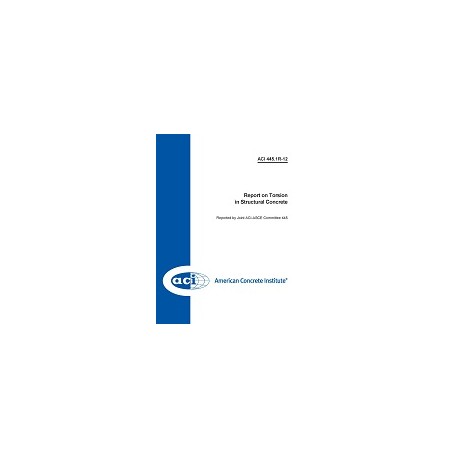Cart
0
Product
Products
(empty)
No products
To be determined
Shipping
$0.00
Total
Product successfully added to your shopping cart
Quantity
Total
There are 0 items in your cart.
There is 1 item in your cart.
Total products
Total shipping
To be determined
Total
Reduced price!
 View larger
View larger
 View larger
View larger
ACI 445.1R-12
M00003094
New product
ACI 445.1R-12 Report on Torsion in Structural Concrete
standard by American Concrete Institute, 04/01/2013
In stock
More info
Full Description
A clear understanding of the effects of torsion on concretemembers is essential to the safe, economical design of reinforcedand prestressed concrete members. This report begins with a briefand systematic summary of the 180-year history of torsion ofstructural concrete members, new and updated theories and theirapplications, and a historical overview outlining the developmentof research on torsion of structural concrete members. Historicaltheories and truss models include classical theories of Navier,Saint-Venant, and Bredt; the three-dimensional (3-D) space truss ofRausch; the equilibrium (plasticity) truss model of Nielson as wellas Lampert and Thurlimann; the compression field theory (CFT)by Collins and Mitchell; and the softened truss model (STM) byHsu and Mo.This report emphasizes that it is essential to the analysis of torsionin reinforced concrete that members should: 1) satisfy the equilibriumcondition (Mohr's stress circle); 2) obey the compatibilitycondition (Mohr's strain circle); and 3) establish the constitutiverelationships of materials such as the 'softened' stress-strain relationshipof concrete and 'smeared' stress-strain relationship ofsteel bars.
The behavior of members subjected to torsion combined withbending moment, axial load, and shear is discussed. This reportdeals with design issues, including compatibility torsion, spandrelbeams, torsional limit design, open sections, and size effects.The final two chapters are devoted to the detailing requirementsof transverse and longitudinal reinforcement in torsional memberswith detailed, step-by-step design examples for two beams undertorsion using ACI (ACI 318-11), European (EC2-04), and CanadianStandards Association (CSA-A23.3-04) standards. Two designexamples are given to illustrate the steps involved in torsion design.Design Example 1 is a rectangular reinforced concrete beam underpure torsion, and Design Example 2 is a prestressed concretegirder under combined torsion, shear, and flexure.

